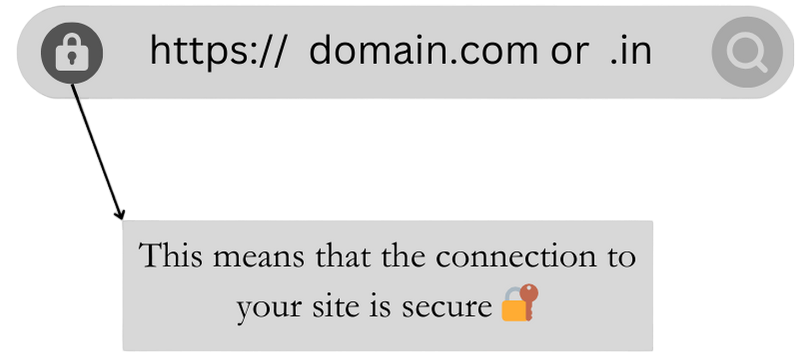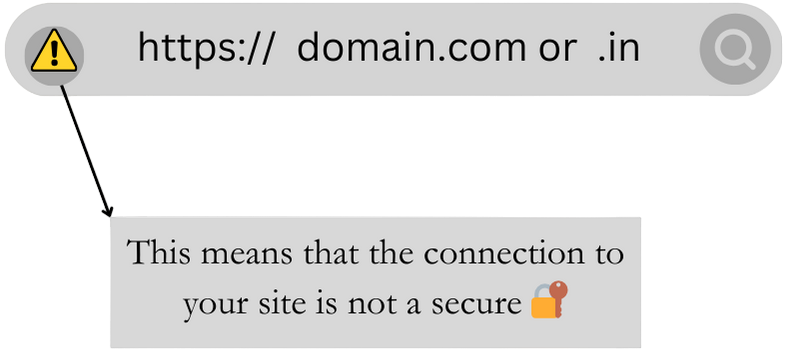SSL stands for Secure Sockets Layer, SSL is a digital security feature that enables a translated connection between a website and a browser. SSL aims to give a safe and secure way to transmit sensitive data, including particular information, credit card details, and login credentials.

The SSL protocol can only be used by websites with an SSL certification, a digital document that validates a site’s identity.
applying SSL is essential to boost site security and performance. In this article, we’ll give the ultimate companion to SSL, including what’s SSL, how it works, and how it impacts websites. We’ll also cover the way of installing an SSL certification.
How Does an SSL Work?
An SSL certificate is a data file containing information about a website’s identity and credentials, and the public key for breaking the communication between the website and the user. An SSL document works by enabling the use of HTTPS, which is a secure performance of HTTP. HTTPS ensures that the data switched between the stoner and the website is encrypted, authenticated, and defended from tampering

To use HTTPS, a website needs to obtain an SSL document from a trusted document authority( CA), which is an association that verifies the identity and legitimacy of the website. The CA will issue the SSL document after validating the website’s domain name, power, and other details. The SSL certificate will have a digital signature from the CA, which proves that the certificate is valid and not forged.
When a user visits a website that has an SSL document, the user’s browser will initiate a process called a TLS handshake, which is a series of routes that establish a secure connection between the browser and the website. The TLS handshake involves the following route.
- The browser requests a secure connection to the website and sends a list of supported cypher suites( encryption algorithms).
- The website responds with its SSL certificate and the chosen cypher suite.
- The browser verifies the SSL document with the CA and generates an arbitrary session key using the public key in the document.
- The browser encrypts the session key with the website’s public key and sends it to the website.
- The website decrypts the session key with its private key and sends proof of communication to the browser.
- The browser and the website use the session key to encrypt and decrypt all the data that are transferred and received over the connection.
A website that has an SSL document will display a padlock icon and the HTTPS prefix in the address bar, indicating that the connection is secure. An SSL document is important for any website that handles sensitive information, such as particular details, login credentials, or payment information. An SSL document protects the privacy and security of the users and the website holders and also helps to prevent cyberattacks similar to phishing, man-in-the-middle, or spoofing.
Types of SSL?
There are various types of SSL based on the number of domains:
- Single-domain SSL: are for one domain only, similar to asexample.com. They can not be used for any subdomains, similar toblog.example.com orshop.example.com.
- Wildcard SSL: is for one domain and all its subdomains, similar to asexample.com, blog.example.com,shop.example.com, etc. They use an asterisk (*) to indicate the subdomain, similar to*.example.com.
- Multi-domain SSL: are for multiple distinct domains, similar to asexample.com, example.net, example.org, etc. They can also cover subdomains of different domains, such as blog.example.com, and shop. example. et, etc. They use a list of subject indispensable names( SANs) to specify the domains and subdomains they cover.
- Unified communications certificates: are a special type of multi-domain SSL documents that are designed for Microsoft Exchange and Office Dispatches servers. They can secure multiple domains, subdomains, and server names, similar to example.com, mail.example.com, auto-discover .example.com, etc.
The position of confirmation refers to the amount of verification that the document authority( CA) performs to issue the SSL document. There are three main ranks of confirmation:
- Domain validation( DV): is the simplest and fastest ranking of confirmation. It only verifies that the applicant owns or controls the domain name. It doesn’t check any information about the association or the applicant’s identity. DV documents are suitable for particular websites, blogs, or small businesses that don’t handle sensitive information.
- Organization Validation ( OV): is a more thorough ranking of confirmation. It verifies the domain name and some information about the association, similar to its name, position, and legal status. It requires the applicant to hand over some documents to prove their identity and control of the domain name. OV documents are suitable for businesses, associations, and e-commerce websites that need to show their legality and credibility to their visitors.
- Extended validation( EV): is the loftiest and most rigorous ranking of confirmation. It verifies the domain name and the association, as well as the physical and functional actuality of the association, its legal identity, and its authority to request the document. It requires the applicant to undergo a strict vetting process and give multiple documents to prove their identity and authenticity. EV documents are suitable for high-profile websites, such as banks, government agencies, or large pots, that need to hand over the topmost rank of trust and security to their visitors.
How Do I Know a Website is Secure with SSL?
Technically, SSL is a transparent protocol that requires little relation from the end user when establishing a secure session. In the fourth case of a browser, you can tell if a site is using SSL when a padlock is displayed or the address bar shows the URL as HTTPS rather than HTTP.
Then’s an illustration of a website secured with SSL in Chrome lots of websites are insecure.
This means the site is secured. it means the SSL certificate is install in a website

It means that the site is not secure, it means that your website does not have an SSL certificate installed.

SSL protocols
The Secure Sockets Layer protocol is the set of rules that govern how SSL works. SSL is a security protocol that provides encryption, authentication, and integrity for data transmitted over the Internet. SSL is the predecessor to TLS, which is the current standard for web security.

There are four main SSL protocols:
- SSL Record Protocol: This protocol defines how data is broken up, compressed, translated, and combined with a communications authentication code (MAC) before being it over the network. It also defines how data is cracked, softened, verified and re-aggregated on behalf of the charity.
- SSL Handshake Protocol: This protocol establishes a secure connection between a web browser and a web server by exchanging cryptographic information similar to public keys and certificates to confirm the identity of both parties and agree on a shared secret key.
- SSL Change Cipher Spec Protocol: This protocol signals the transition from the original insecure connection to a secure connection using an agreed secret key. It involves a single communication that causes the pending state to be copied to the current state.
- SSL Alert Protocol: This protocol transmits SSL-related alerts, such as warnings or violations, to the peer entity. Each communication in this protocol consists of two bytes, one for the alert status (warning or fatal) and one for the alert description (similar to asclose_notify, unexpected_message, or bad_certificate).
Why Do I Need SSL?
SSL is important for your online security and privacy. It protects your data from being interdicted or modified by hackers when you visit a website or submit information online. SSL also helps you validate the identity and responsibility of a website before sharing any sensitive or particular information with it.
Some benefits of SSL are:
- It encrypts your data, making it undecipherable to anyone trying to enter it without the proper key.
- This authenticates the website, ensuring that you’re communicating with the intended party and not a fake or vicious site.
- This prevents tampering, precluding hackers from altering the data you send or take or inserting vicious code.
- This boosts your SEO, as Google and other search engines prefer websites that use SSL and rank them advanced in search results.
- This enhances your character, as guests and visitants will see that you look out for their security and privacy and trust you more.
Conclusion
Secure Sockets Layer (SSL) is a protocol that creates a secure connection between a client and a web server. It encrypts all data transfers so that third parties cannot steal sensitive information such as login credentials and credit card numbers.
Hosting is a very good service provider company which provides you with lifetime SSL certificate service. Which is full protection that is automatically installed on the website.
